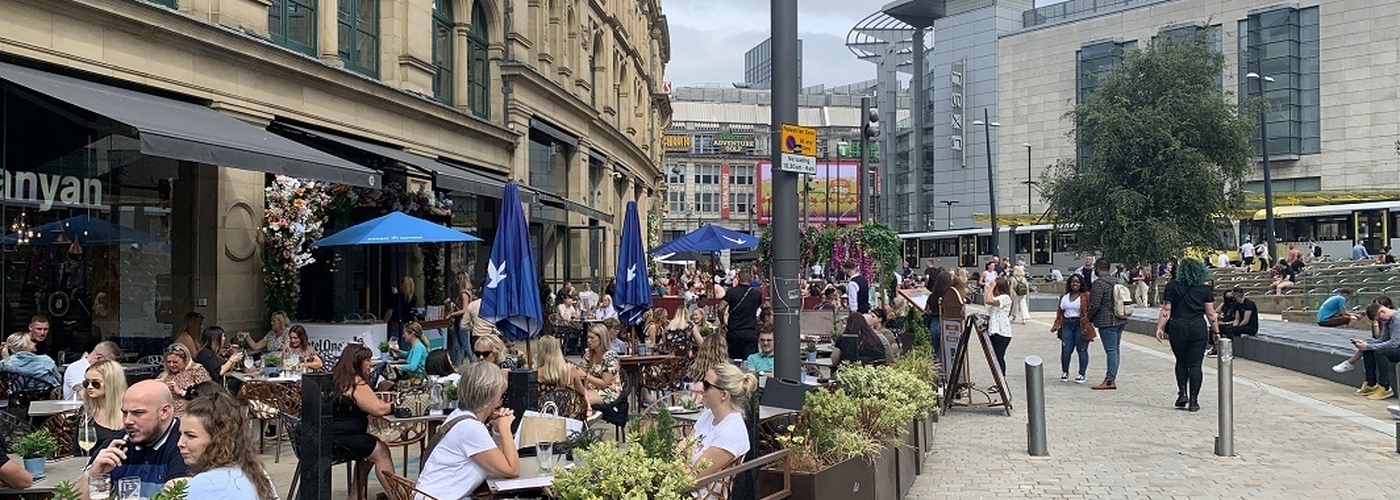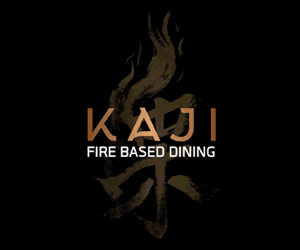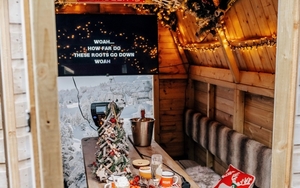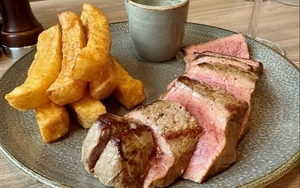Food, drink, magicians, electric razors and the coolest club: all part of the Corn Exchange story
The Corn Exchange is all about food now and it was when it was built. A lot of wine has flowed from the glass since that first building so instead of traders dealing in wholesale grocery goods, the place is now all about restaurants, bars and the hotel above.
The Corn Exchange is on the rise again although not in the way the Manchester Area Psychogeographic envisaged
With outlets such as Salvi’s, Tampopo, Delhi House Café, Mowgli, Pho, Cosy Club, Gino’s and others, you can munch around the world inside and outside the building. The external dining available on the Hanging Ditch side of the building is the longest in the city. Yet, there's more to the Corn Exchange than meets the eye. It has a story that is old and tales associated with it that are curious and even absurd.
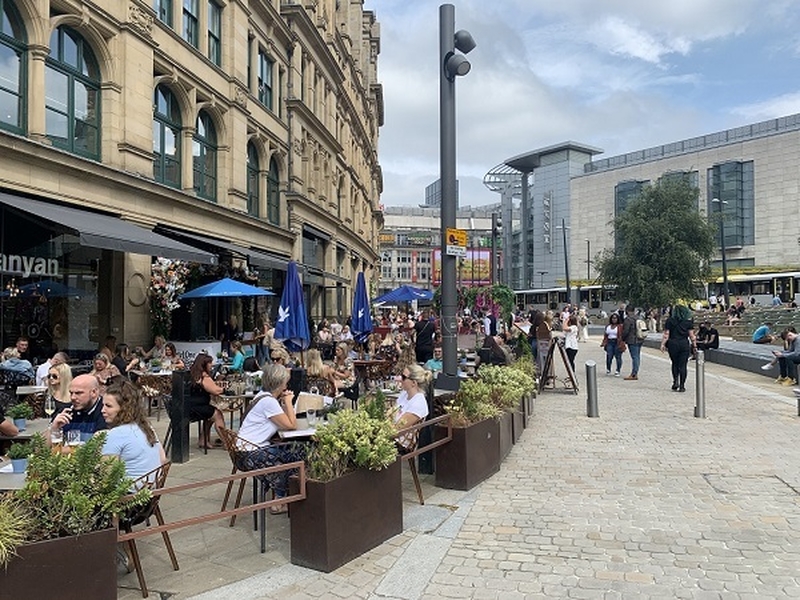
Let’s begin with witchery and the absurd. In March 1996, a local paranormal group, Manchester Area Psychogeographic, attempted to levitate the Corn Exchange. The group believed alchemist, mathematician and enchanter John Dee, had lived for several years on the site while exercising his duty as the Warden of the town at the nearby Chetham’s Library and Medieval Buildings almost 400 years before.
You can probably guess our paranormal bunch didn't manage to float the building otherwise you might have heard about it. There probably would have been a film.
Still, the group claimed their magic moved the building, "very slightly", a claim supported by a member of staff at the Harry Hall Cycles shop, which had a unit in the Corn Exchange at the time, who said a bike had mysteriously fallen off its stand.
Back in 1996, an attempt at levitation fitted the profile of the Corn Exchange. On the former trading floor, you could, in half an hour, buy a rare bootleg album by cult-Manchester band Magazine, have your tarot read, crystal-gaze, explore your "aura", buy an obscure antiquarian book, gain a pair of tartan platform shoes and wait for that tattoo you’d always wanted.
Meanwhile, upstairs Carcanet Press had their offices, one of the UK’s best-known poetry publishers and a labour of love from Mexican/Mancuncian Michael Schmidt. Once, as a young man, I was sent on a mission to collect a poster from a printers based in the Corn Exchange. I passed an open door on the second floor and was puzzled.
“What goes on in here?” I asked the elderly gentlemen bent over an array of tiny machine components.
“I repair electric razors,” he said.
“Anything else, just electric razors?” I said.
“Nothing else,” he said.
“Is there much call for that?” I asked.
“You’d be surprised,” he said.
I was.

The Corn Exchange first arrived in the 1830s. In 1834, several Manchester food merchants met together to discuss the need for a covered market. They advertised for property between Hanging Ditch and Fennel Street which had been a markets area since Saxon times. Previously the merchants had met in all weathers on the corner of Cathedral Street and Fennel Street.
They bought the land, raised the funds and on 6 January 1837, a grand dinner was given to celebrate the opening of the Corn Exchange. The Manchester Guardian wrote, "We congratulate the promoters of the new edifice: a Corn Exchange worthy of the importance of this great and flourishing town."
It was a beauty too, although occupying only a fraction of the present site. The architect was Richard Lane, who also designed the still surviving Friends Meeting House on Mount Street close to the Town Hall. The columned Classical building can be seen peeping out of the picture here.
The attractive nature of the hall meant it could be rented out in the evenings for concerts and entertainment and extra revenue extracted for the Corn Exchange shareholders. As the nineteenth century progressed it became apparent the building was too small for the growth in Manchester's grocery and corn trade.
Plans were put in place and eventually, the whole city block was bought and converted into the Corn Exchange we know today. Architects Ball & Elce were responsible for the brick part to Fennel Street and Potts, Son & Pickup the rest. The vastly enlarged building was finished in 1903 with its trademark dome and familiar Renaissance-style façade.
Different ways of doing business led to closure in the decades following World War II. The large trading floor was used, for a while, as rehearsal space for the Royal Exchange Theatre. Part of the award-winning TV series Brideshead Revisited from Granada TV was filmed there. Then the eccentric market and the electric razor repairers moved in.

Entertainment remained. From the sixties to the nineties the Corn Exchange hosted nightclubs such as the renowned Pips. Pips advertised: "Nine beautiful bars and eleven crowded dance floors," and with its Roxy and Bowie Rooms it was the city’s cool-glamour venue where extravagance was a la mode.
Despite having a room named in honour of his band, it’s said the dapper Bryan Ferry was once refused admission for wearing jeans. Regulars from Manchester’s music scene included the boys from Joy Division/New Order, Ian Curtis, Bernard Sumner and Peter Hook, The Smiths’ leaders, Morrissey and Johnny Marr, and Factory Records folks such as Tony Wilson and Peter Saville.
There are lots of fond memories for Pips so thanks to the Manchester Digital Music Archive for this picture from the club in 1982 which certainly captures the spirit of the times.
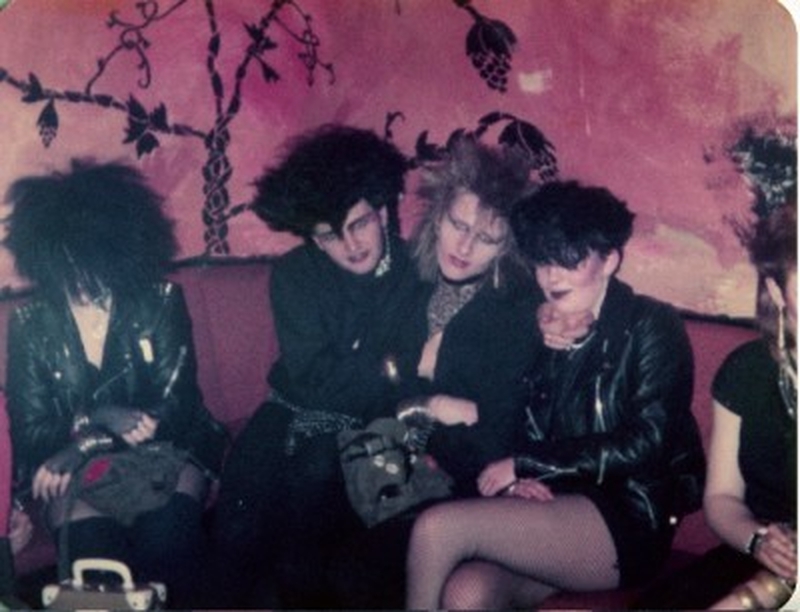
After the 1996 IRA bomb there was an attempt to turn the building into a shopping centre called The Triangle but the idea back-fired. A return to food and drink with restaurants and bars has proved a far better bet. The Corn Exchange is on the rise again, not in the way the Manchester Area Psychogeographic might have envisaged, but the food can be very uplifting.
A pasta mare from Salvi’s please, or a nasi goreng from Tampopo or what about the halwa dessert from Delhi House Café, made from green chillies, for a memorable conclusion?






